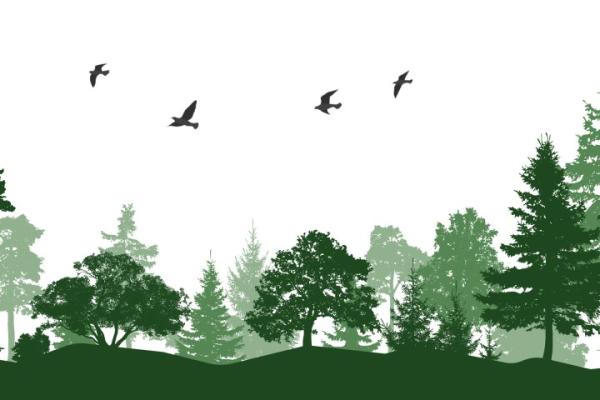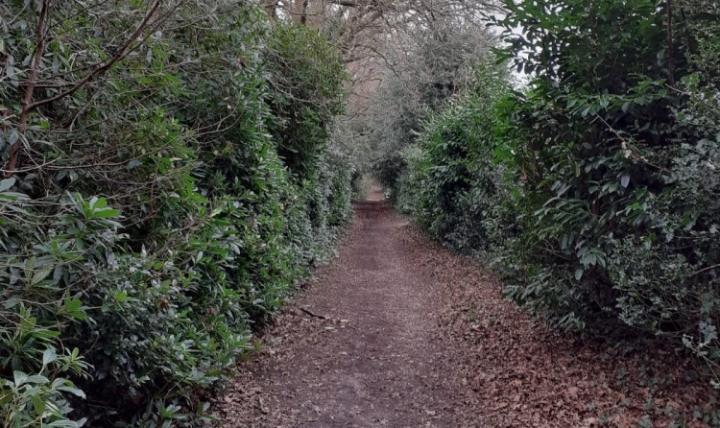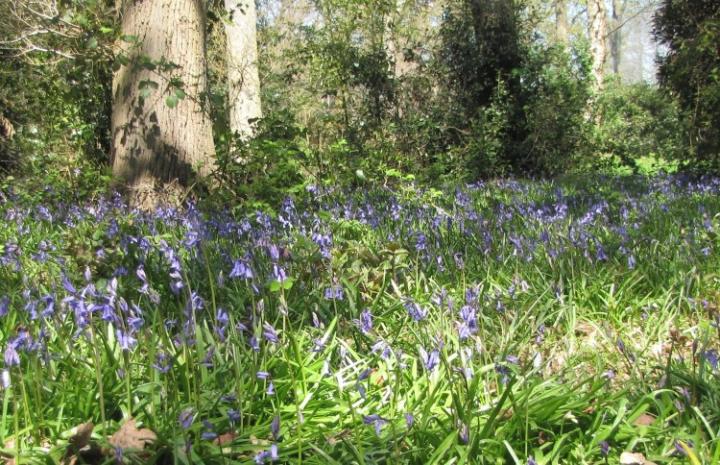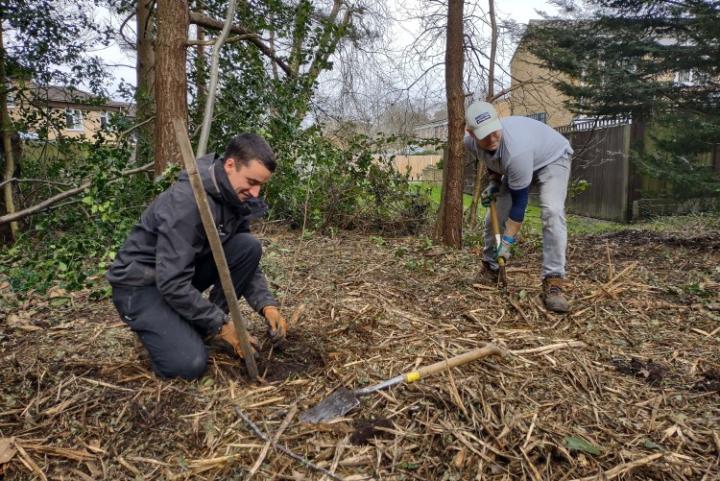
Removing invasive species
In this leaflet we look at how we are tackling the issue of common rhododendron (R. ponticum) and cherry laurel (Prunus laurocerasus).
These are evergreen shrubs that were brought to the UK as ornamental plants in the 1900s. They have since escaped into our natural environment.
Harmful to woodlands
Their flowers may look nice in the spring, but their value for native wildlife is very poor.They are non-native, invasive species that can cause harm to the woodlands they invade.
They produce a large quantity of seed, which means they can spread and quickly grow to dominate a forest floor. Their dense foliage blocks out light, and their extensive root system and leaf litter is toxic to many other plants.

We have been removing rhododendron from local woodlands, such as at Nine Mile Ride and South Hill Park.
Restoring biodiversity
When we remove these invasive species, there is more space and light for native plants to grow again. This helps bring back a mix of plants and creates better homes for insects, birds, and other animals. The woodland becomes healthier and more balanced.
Improved resilience
Removing invasive species and encouraging natural regeneration of the woodland will help improve its resilience.
A healthier woodland ecosystem will have a better chance of surviving against potential impacts from:
- pests and diseases
- climate change
- outbreak of fire
- pollution

Ground flora, such as bluebells, benefit from the lighter conditions.
A future worth investing in
By controlling invasive species and planting new native trees, we can look forward to healthier, more vibrant woodlands filled with diverse plants and animals.
This work will help protect our forests for now and future generations of people and wildlife.

More information
Other habitat guides are also available from the wildlife and biodiversity page.
If you have any questions about the work taking place, contact us using our online form.